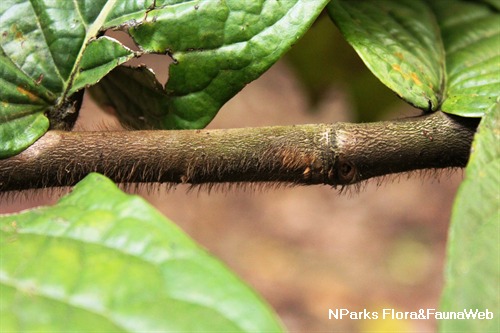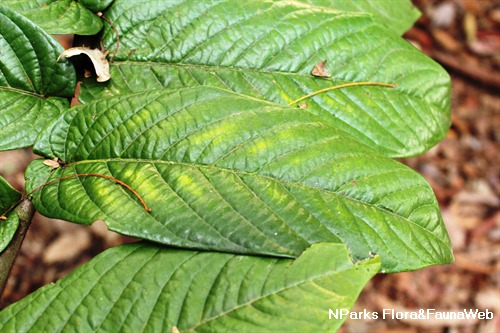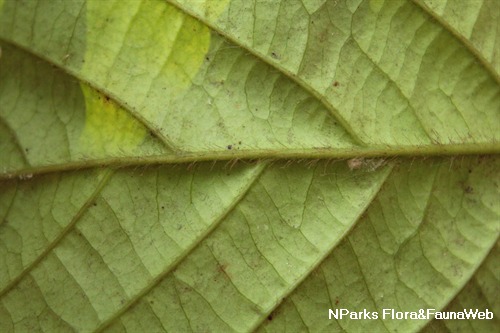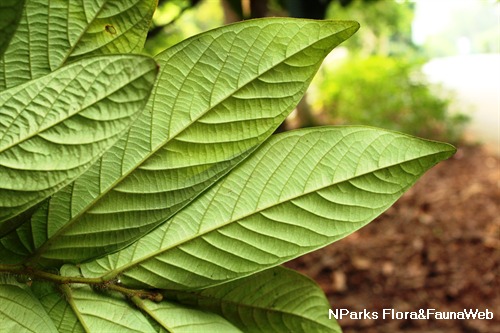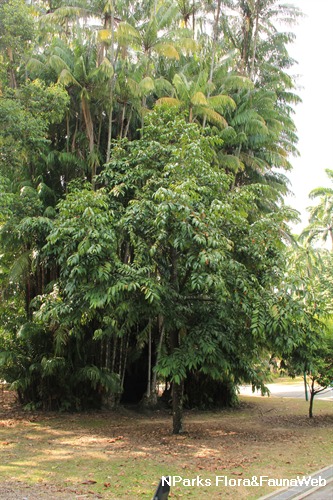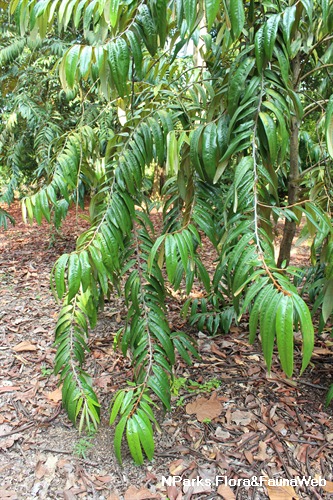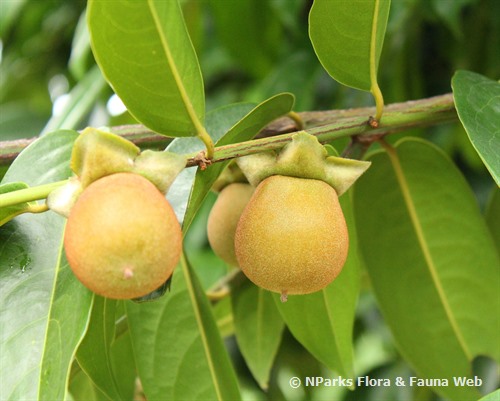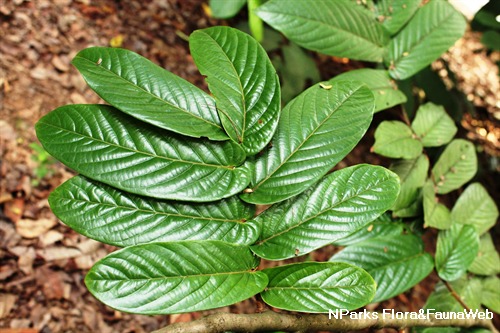
Name
Classifications and Characteristics
| Plant Division | Angiosperms (Flowering Seed Plants) (Dicotyledon) |
|---|---|
| Plant Growth Form | Tree |
| Lifespan (in Singapore) | Perennial |
| Mode of Nutrition | Autotrophic |
| Maximum Height | 10 m |
Biogeography
| Native Distribution | Malaysia |
|---|---|
| Native Habitat | Terrestrial |
| Preferred Climate Zone | Tropical |
| Local Conservation Status | Non-native (Horticultural / Cultivated Only) |
Description and Ethnobotany
| Growth Form | It is a tree, to 10 m tall. |
|---|---|
| Foliage | Leaves are oblong to ovate shaped (11 – 22 cm long and 3 – 8 cm wide), thinly leathery and mostly smooth except the mid rib. Leaves have characteristic heart shaped leaf base. There are 15 pairs of secondary veins which looped and joined near the margin, and reticulate tertiary veins. Young twigs are covered in dense yellowish hairs. |
| Flowers | Female flowers occur in few flowered cymes at the leaf axils. Each female flower comprises of 5 overlapping calyx lobes, 5 petals and 5 sterile stamens and 1 hairy ovary. |
| Fruit | Fruit is spherical (about 2.5 cm wide) and occurs singly or in pairs. It is densely covered with orange-brown hairs. Each fruit may contained up to 4 seeds with ruminate endosperm. |
| Habitat | It grows in primary rainforest to 500m. |
Landscaping Features
| Desirable Plant Features | Ornamental Foliage, Ornamental Form |
|---|---|
| Landscape Uses | Parks & Gardens |
Plant Care and Propagation
| Light Preference | Full Sun, Semi-Shade |
|---|---|
| Water Preference | Moderate Water |
| Plant Growth Rate | Moderate |
| Rootzone Tolerance | Moist Soils, Well-Drained Soils, Fertile Loamy Soils |
| Propagation Method | Seed |
Foliar
| Mature Foliage Colour(s) | Green |
|---|
Image Repository
Others
| Master ID | 32781 |
|---|---|
| Species ID | 7193 |
| Flora Disclaimer | The information in this website has been compiled from reliable sources, such as reference works on medicinal plants. It is not a substitute for medical advice or treatment and NParks does not purport to provide any medical advice. Readers should always consult his/her physician before using or consuming a plant for medicinal purposes. |


